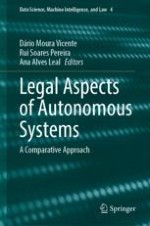2024 | OriginalPaper | Buchkapitel
The Basic Models of Criminal Liability of AI Systems and Outer Circles
verfasst von : Gabriel Hallevy
Erschienen in: Legal Aspects of Autonomous Systems
Aktivieren Sie unsere intelligente Suche, um passende Fachinhalte oder Patente zu finden.
Wählen Sie Textabschnitte aus um mit Künstlicher Intelligenz passenden Patente zu finden. powered by
Markieren Sie Textabschnitte, um KI-gestützt weitere passende Inhalte zu finden. powered by
